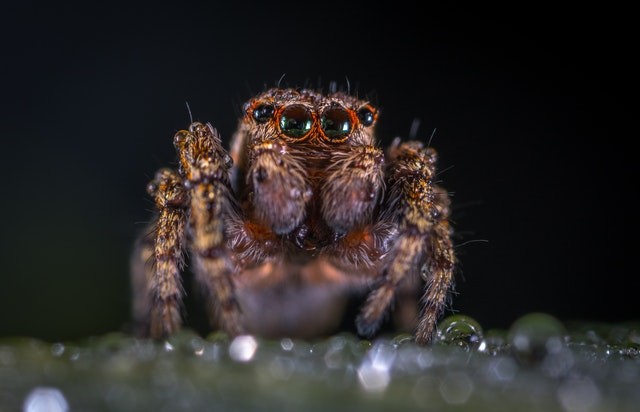The king baboon spider (Pelinobius muticus) is known to be a venomous spider that is rusty brown to orange in color. They live in the shrublands and grasslands of east Africa primarily in Kenya and Tanzania. Researchers recently extracted venom from this spider to help understand chronic pain.
Why is the Venom of the King Baboon Spider so Powerful?

Although a bite from the spider is not so deadly to humans, it is said to cause a lot of pain and itchiness that can last for days, that's why you are advised to keep your distance if you recognize or sense a spider with a rusty brown color like that of the king baboon spider.
According to Phys.org, scientists are convinced they have discovered why the venom of the king baboon spider is so powerful.
Their findings has contributed in the production of treatments for spider and they could also play a role in understanding the reason why humans is capable of feeling chronic pain - and what can be done about it.
Also Read: Daddy Longlegs: Do These Spiders Have the Most Powerful Venom in the World?
Analysis of the Spider's Venom
During detailed analysis of the venom, a peptide called the pm1a was found, this peptide is known to manage responses in a group of sensory neurons called the dorsal root ganglion. This peptide in the venom triggers pain in the central nervous system, causing continuous pain for days from the bite.
A synthesized version of the pm1a was tested using a mice as the test subject. From the experiment, the scientist confirmed through neuron excitability, the three nerve channels which are the sodium, potassium, and calcium - helps in responding to the pain stimuli.
The pm1a seem to be the most essential property recorded in this venom since during the experiment, it increased the sensitivity of pain by firing the already registered pain in the central nervous system.
Further research revealed hyperexcitability as the similarities shown between the test subject mice and humans suffering from some certain type of chronic pain. This finding has created optimism towards finding treatments for this chronic pain.
"The coordinated modulation of excitatory and inhibitory ion channels involved in pain propagation may represent an economical and effective defense strategy in pain-inducing defensive venoms," as per Science Alert.

Molecular Interactions of Pm1a
Although chronic pain treatment has not been fully confirmed, the scientist using the pm1a are experimenting further on the mechanical and chemical interactions between the peptide and the human body.
Additionally, the findings on this peptide have helped scientists in confirming the reason behind the extreme pain caused by this venom which is a huge lead and with time the scientist might be able to find a way to neutralize the pm1a peptide by reducing the excitability in the central nervous system thereby reducing the chronic pain.
"Detailed studies directed to determine the specific molecular interactions of Pm1a with its many targets may inform the development of pharmacological analogs that could decrease excitability specifically in pain neurons," says the reseacher.
Related Article: Funnel-Web Spider: Venom of Deadliest Spider in Australia May Help Save Heart Transplant Patients
For more news, updates about spiders and similar topics don't forget to follow Nature World News!
© 2024 NatureWorldNews.com All rights reserved. Do not reproduce without permission.

![Tsunami Hazard Zones: New US Map Shows Places at Risk of Flooding and Tsunamis Amid Rising Sea Levels [NOAA]](https://1471793142.rsc.cdn77.org/data/thumbs/full/70325/280/157/50/40/tsunami-hazard-zones-new-us-map-shows-places-at-risk-of-flooding-and-tsunamis-amid-rising-sea-levels-noaa.jpg)



